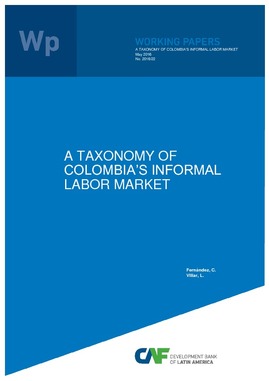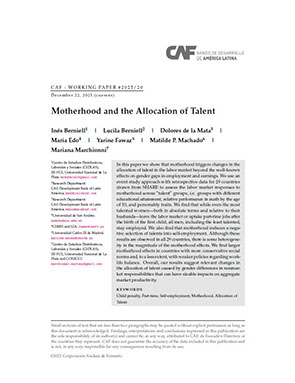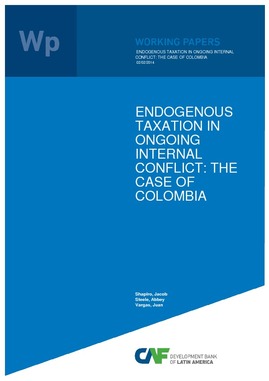A Taxonomy of Colombia’s Informal Labor Market
Resumen
A taxonomy of the informal labor market is extremely important to understand and handle informality, particularly in a country as Colombia where this phenomenon is large and heterogeneous. As we will argue in this paper, it is possible to identify four different types of informality, according to the reasons to be informal: low productivity of the worker (subsistence informality), barriers to formality (induced informality), choice (voluntary informality) and both choice and low productivity (mixed informality). The policy recommendations to handle informality varies according to the target type of informality. While induced informality might be reduced by the removal of formal employment barriers or by the implementation of active policies to reduce segregation in society, structural informality requires other kinds of policies, such as a focus on improving educational outcomes. Similarly, in the case of voluntary informality, providing economic incentives to formalize and controlling informality might be more effective, whereas mixed informality is more related to wrong incentives created by social benefits. In this paper we propose a methodology to identify the four types of informality to the case of Colombia that follows what we did in Fernandez et al. (2016) but with greater emphasis on the education level. Although the correspondence is far from perfect, we show that in general terms, informal workers with primary education or less can be classified in the Subsistence informality group, informal workers with secondary education can be included in the Induced informality group, informal workers with tertiary education or more can be treated as Voluntary informal workers and informal workers with middle school education can cover mixed informality. Hence, the policy recommendations to handle informality among each education group are different.
Materia
País / Región
Fecha
2016Citar de esta publicación
Item perteneciente a la Colección
Autor
Fernández, C.Villar, L.
Items Relacionados
Savings Groups Reduce Vulberability but have Mixed Effect on Financial Inclusion
This paper evaluates the impact of the introduction of savings groups on poverty, vulnerability, and financial inclusion outcomes in rural Peru. Using ...
Motherhood and the Allocation of Talent
In this paper we show that motherhood triggers changes in the allocation of talent in the labor market beyond the well-known effects on gender gaps in ...
Endogenous Taxation in Ongoing Internal Conflict: The Case of Colombia
Recent empirical evidence at the cross-country and subnational levels suggests that internal conflicts harm state capacity and tax performance. On the ...





